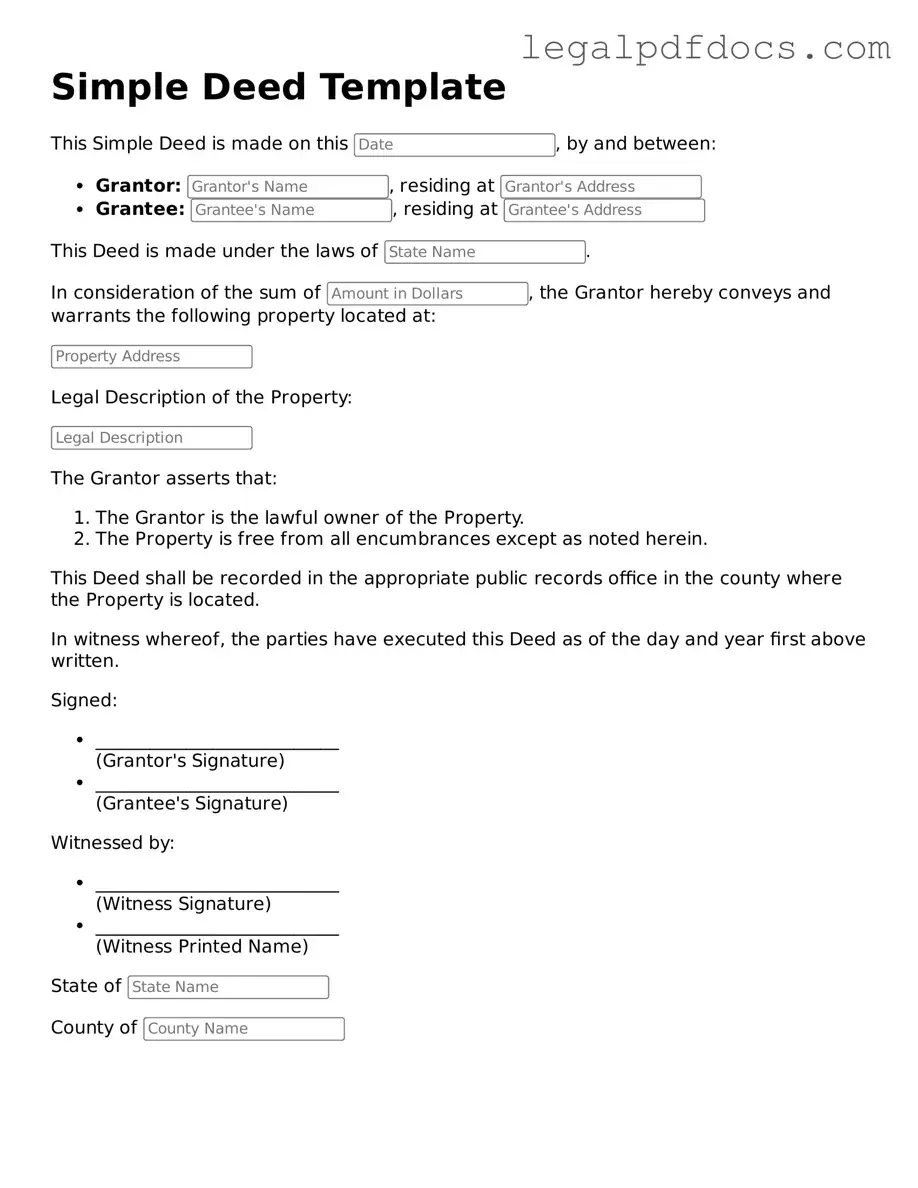The Deed form plays a crucial role in real estate transactions, serving as a legal instrument that facilitates the transfer of property ownership from one party to another. This document outlines essential details, including the names of the grantor and grantee, a description of the property, and any conditions or covenants associated with the transfer. It is important to ensure that the Deed form is executed properly, as this affects the validity of the transaction. Various types of deeds exist, such as warranty deeds and quitclaim deeds, each offering different levels of protection and assurance regarding the title. Understanding these distinctions can help individuals make informed decisions during the property transfer process. Additionally, the Deed must be signed, notarized, and recorded in the appropriate jurisdiction to provide public notice of the change in ownership. This form not only signifies a legal agreement but also serves as a vital record that can protect the rights of both parties involved.
